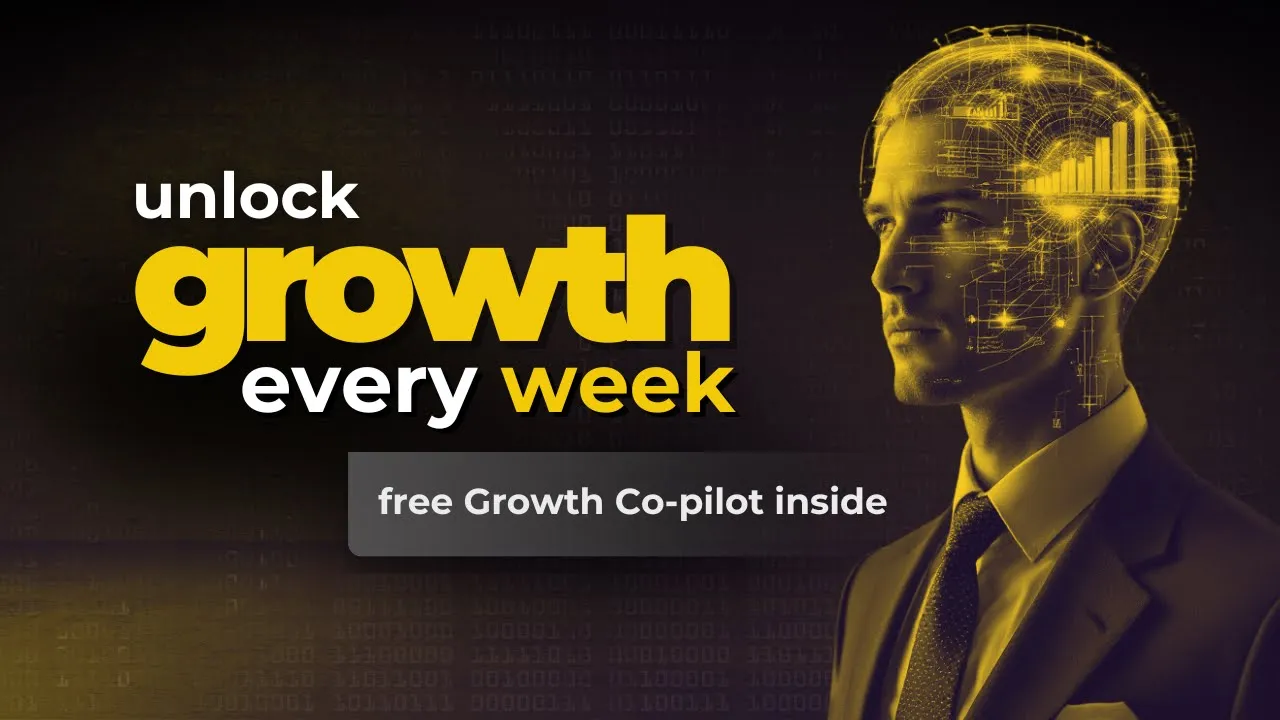
User activation isn’t a buzzword. It’s the real deal.
Without a high-performing user activation framework, you’ll never identify your first user activation event. And if that happens, you’ll never be satisfied with the number of free trial users converting to paying customers.
Fortunately, implementing a user activation framework isn’t as confusing or challenging as it sounds. General steps can unify your Product, Growth, and Marketing teams to improve your odds of success. And that’s what I discuss in the article below.
What Is User Activation?
User activation (or customer activation) is the point of the funnel where users – often those on a free trial – realize the true value of your product. Many people also refer to this as a user having an “Aha! moment.”
Think about it like this: activation occurs when a user realizes your product’s value, decides to purchase it, and actively uses it.
Every successful product-led business has a user activation plan that moves users into the category of “paying customers.”
What Is a User Activation Framework?
Customer activation doesn’t happen by mistake. It takes a dedicated plan – a user activation framework – that you rely on to reach your goals.
The best way to understand a user activation framework is to see one in action. For example, the BJ Fogg Behavior Model provides a framework to reduce the number of users falling off during onboarding.

What Is a First Activation Event (FAE)?
Let’s look at how we operate at Wave to help understand what an FAE looks like and why it’s a critical piece of onboarding.
At Wave, the Growth team owns the onboarding experience and is responsible for activation, or the FAE.
In some ways, the FAE is the same as an “Aha! moment.” However, it may not be the first “Aha! moment” the user experiences. There could be multiple moments leading to an FAE, and that’s okay. It’s often necessary to push the user through the funnel.
Your mission during onboarding is to identify valuable customers, guide them to value as soon as possible, and set them up for success.
Why the “Aha! Moment” Is Not Enough to Define Activation
The “Aha! moment” is not always enough to define activation. Think about activation as a retention lever. It must be rooted in engagement, time-bound, and indicate that a business process is forming.
So, for an activation event to be present — not just an “Aha! moment” — it must encompass all of these things. It’s this combination that makes for a first activation event.
Example of an Activation Metric
Trello has a “4 in 28” activation metric that tracks how much content a new user creates in the first 28 days. The SaaS company found that users who create four pieces of content within the first 28 days are more likely to stay on board as long-term customers.
Most Trello boards have a primary user with multiple collaborators who often do nothing more than consume content. Not all paying customers reach the “4 in 28” benchmark, but that doesn’t make the metric any less valuable.

The numbers show that the retention value is much greater when a new user goes through this path.
Should SaaS With Different Products Have Unified FAEs?
There’s no simple answer to this question, and sometimes it’s yes, sometimes no. For example, at Wave, we have invoicing and payment products that we look at together. But that doesn’t mean we have separate FAEs for each one.
Here’s how we look at it…
A customer sends an invoice, and you collect payment on that invoice. Both events are part of the transaction process, so unified FAEs make sense. It doesn’t mean this is the only way to do it, but for us, in this situation, combining the FAEs for two products into one makes sense.
How to Find out the First User Activation Event
There’s no right or wrong method for determining the first user activation event.
Start by asking questions such as:
- Who are you serving?
- What is your ideal customer profile?
- Who have been your most successful customers to date? Your most retained customers?
The answers to these questions matter because it’s critical to deriving your FAE from your retained customers. Remember: activation is a retention lever.
Once you know who you retain the most, you can turn your attention to segment-level retention. Choose a segment, choose a target, and pinpoint who retains the most. You can then work backward toward activation.
Begin your search with the idea that it’ll take some time. Don’t expect to unearth your first user activation event quickly. There are both qualitative and quantitative exercises that you need to complete.
The qualitative process includes talking to customers, discovering their wants and needs, and reviewing onboarding maps. Quantitative exercise focuses on statistical analysis, correlation, and onboarding metrics.
How to Get Support and Buy-In From the Organization
Making unilateral decisions regarding user activation frameworks and the first user activation event is a mistake. Instead, getting support and top-down buy-in from the entire organization is critical to your success.
You need the backing of a team with the same vision to operate with confidence, not doubt.
Growth is based largely on experimentation, but you must predictably show results to be credible and earn the trust of your Growth team.
In short, set and manage expectations and bring predictability to the process.
Predictability
Getting support as the Growth team or leader often comes down to integrating predictability into your business practices.
Doing so comes about in two ways:
- Metric accountability
- Project management
Managing Growth team collaboration and cross-departmental interaction brings up several issues. How do you work with the Growth and Product teams? How do you manage projects? How do you work with data?
These topics are potential friction points that you can transform into opportunities. And the more you work towards that, along with having a predictable approach, the easier it is to comfort your executive team to ensure full buy-in.
Examples of User Onboarding Experiments to Increase Activation
There’s a clear delineation between the product that users come to use and what their immediate needs are. Needs change – an immediate need is not always a long-term one.
At Wave, we go to market based on the individual traits of each product. We acquire users for invoicing, payroll, accounting, etc. When this happens at the acquisition level, it must also occur during onboarding.
For this reason, it’s important to delineate who visits your website and what their intentions are. We ran into a lot of trouble at this stage in our early days, and we’ve had much more success waiting for users to take their first few actions to figure out what they want to do.
Delineating People Upfront During User Onboarding
Delineating prospects upfront during onboarding is where demand generation and growth must work closely together. Without this, you’re unknowingly killing your retention rate.
At Wave, we’ve found that most people onboard, gain trust in one product, and then learn about our other money management features. Users who utilize more than one of our products understandably receive even more value from Wave. In exchange, we gain more value, too.
While there is a product lifecycle ecosystem, the question remains: do users come in with a cluster of needs? They generally don't. They come to Wave for their immediate need, which is the product that will address their current problem. Then they learn more about our other products and potentially branch out.
Early on, understanding what needs brought prospects was difficult. However, we slowly figured it out as we refined processes, such as customizing our “second screen” with different questions depending on the purchased product.
For instance, someone who signs up for invoicing has different needs than a user seeking an accounting or payroll solution.
Remember that users come to your website to solve a pain point. However, you can’t offer a solution until you learn more about them.
Guided vs. Non-Guided Onboarding
Users like guidance, and it’s a big part of onboarding philosophies and a core principle of onboarding. But does it work with everyone? Maybe, maybe not, and that’s why experimentation is so necessary.
At Wave, we wanted to compare user behavior during guided and non-guided onboarding. During our experimentation, every user progressed through a guided onboarding path with clear steps.
It was easy to see who dropped off at what point. In addition, we discovered that not everyone requires step-by-step guidance. Some users wanted to explore independently before advancing along a guided path.
The results of our experiment revealed that guidance does not work for everyone, prompting us to scale back guided onboarding for specific user segments.
How Does an Activation Metric Fit in?
A first activation metric doesn’t look the same for every company, and factors such as your onboarding process and user base make it vary.
The “4 in 28” activation metric of Trello (mentioned above) is a great example. Broken down, the company wants a user to sign up and create four pieces of content within their first 28 days as a user. They’ve found that users who do this will retain much better in the long run.
The simple activation goal of Trello’s onboarding team is to get as many users as possible to “4 in 28.” Setting this target doesn’t mean that every paying customer reaches this mark, but those who do hold a much higher retention value.
User Activation Tips for Growth Teams
The only user activation tips that matter are the ones that get the job done.
Getting a user to the FAE as quickly and efficiently as possible should be your entire focus. You’ll need to adjust the following two user activation tips to suit your process, but they can provide a foundation for taking the first step in the right direction.
Focus on Retention
Activation is a retention lever; this concept should drive almost every decision your Growth team makes. Understand the profile of your most retained customers, and then work backward to figure out what specific actions lead to activation.
It’s About the “Why”
Getting caught up in the "whats" and "hows" of the onboarding process is easy. However, the path forward is figuring out solutions and what matters the most is addressing the "why."
Why does this particular process exist? Why are you measuring these metrics?
Focus on why you’re doing specific tasks. Doing so may lead you to take your own path. You may never again optimize for the metrics your market has given you. You’ll start creating the frameworks and metrics you want to build for, as these are best for your product-led business.
Are You Ready to Take Action?
The proper implementation of a user activation framework will increase the number of users who realize the true value of your product. And when that happens, an uptick in your conversion rate will follow shortly behind.
Are you ready to get serious about your user activation framework and first user activation event? The above guidance is a good start, but our free Product-Led Fundamentals course will take you the rest of the way. Sign up today, and you’ll be making changes for the better by tomorrow.























